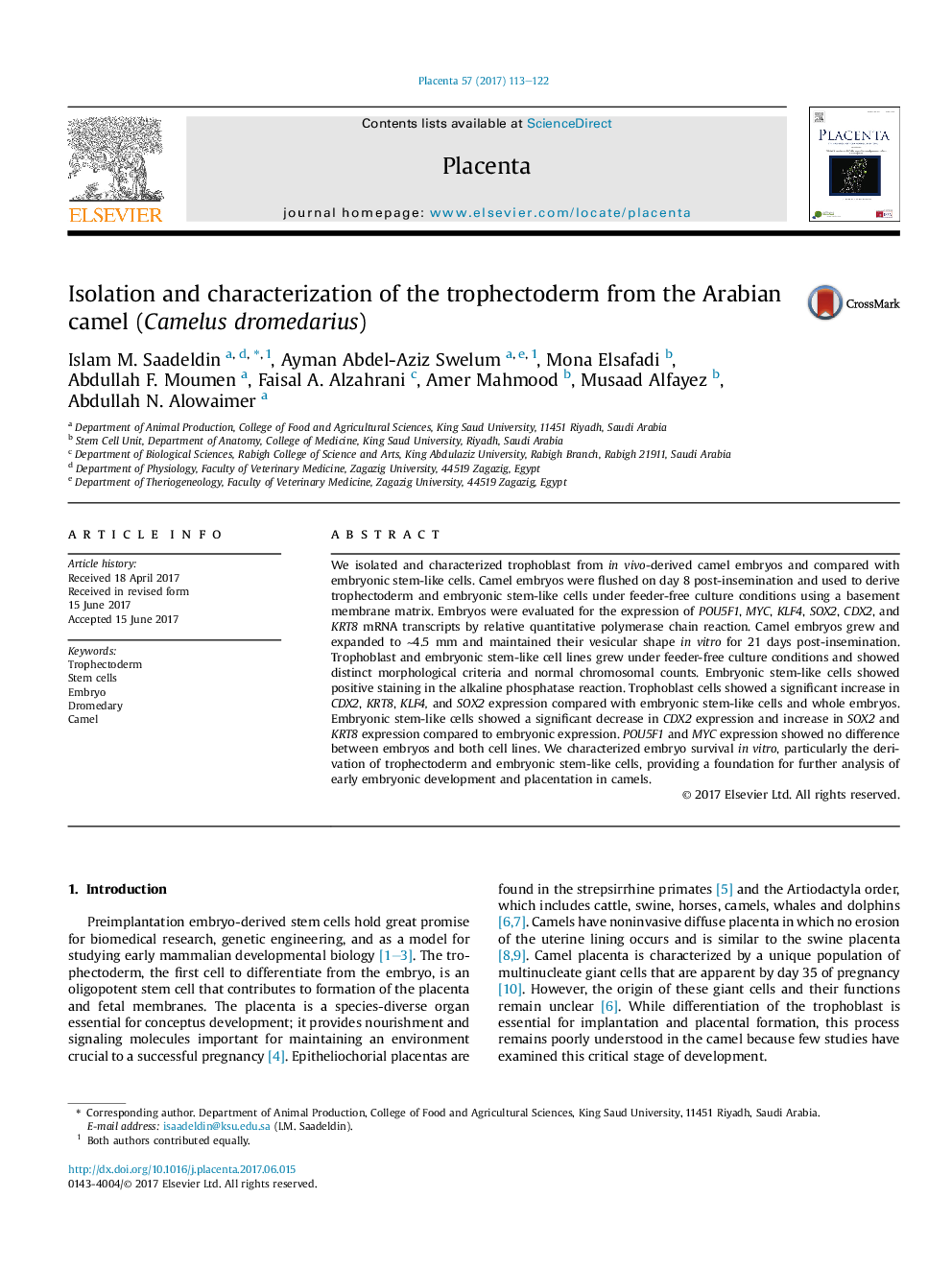| Article ID | Journal | Published Year | Pages | File Type |
|---|---|---|---|---|
| 5586187 | Placenta | 2017 | 10 Pages |
Abstract
We isolated and characterized trophoblast from in vivo-derived camel embryos and compared with embryonic stem-like cells. Camel embryos were flushed on day 8 post-insemination and used to derive trophectoderm and embryonic stem-like cells under feeder-free culture conditions using a basement membrane matrix. Embryos were evaluated for the expression of POU5F1, MYC, KLF4, SOX2, CDX2, and KRT8 mRNA transcripts by relative quantitative polymerase chain reaction. Camel embryos grew and expanded to â¼4.5 mm and maintained their vesicular shape in vitro for 21 days post-insemination. Trophoblast and embryonic stem-like cell lines grew under feeder-free culture conditions and showed distinct morphological criteria and normal chromosomal counts. Embryonic stem-like cells showed positive staining in the alkaline phosphatase reaction. Trophoblast cells showed a significant increase in CDX2, KRT8, KLF4, and SOX2 expression compared with embryonic stem-like cells and whole embryos. Embryonic stem-like cells showed a significant decrease in CDX2 expression and increase in SOX2 and KRT8 expression compared to embryonic expression. POU5F1 and MYC expression showed no difference between embryos and both cell lines. We characterized embryo survival in vitro, particularly the derivation of trophectoderm and embryonic stem-like cells, providing a foundation for further analysis of early embryonic development and placentation in camels.
Related Topics
Life Sciences
Biochemistry, Genetics and Molecular Biology
Developmental Biology
Authors
Islam M. Saadeldin, Ayman Abdel-Aziz Swelum, Mona Elsafadi, Abdullah F. Moumen, Faisal A. Alzahrani, Amer Mahmood, Musaad Alfayez, Abdullah N. Alowaimer,
